Imagine you want to build a new car. Instead of spending years designing and perfecting every detail, you create a basic version first – something that can drive. This basic version, even though it may not have all the fancy features, is your minimum viable product (MVP).
In Agile, instead of building the entire software with all the features at once, you start with a simplified version with just enough functionality to be usable. When you create an MVP, you get a working version out quickly and start getting user feedback.
The key idea is to prioritize the essential features, get them working, and then gradually add more features based on user feedback. It is like creating a simple version of your product first, testing it in the real world, and then making improvements based on what you learn.
How do you build an MVP? What are its advantages? What is MVP in Agile, etc.? Check for more details in our detailed article about MVP.
Now, let’s look at the more basic things about MVP Agile.
Why do businesses use Agile software development for MVP?
In Agile development, consider the MVP (minimum viable product) as your project’s superhero. It is all about saving time and money and avoiding risks. The MVP is like the intelligent architect of your project—a plan to make things efficient.
Below, you can see the basics of MVP Agile.
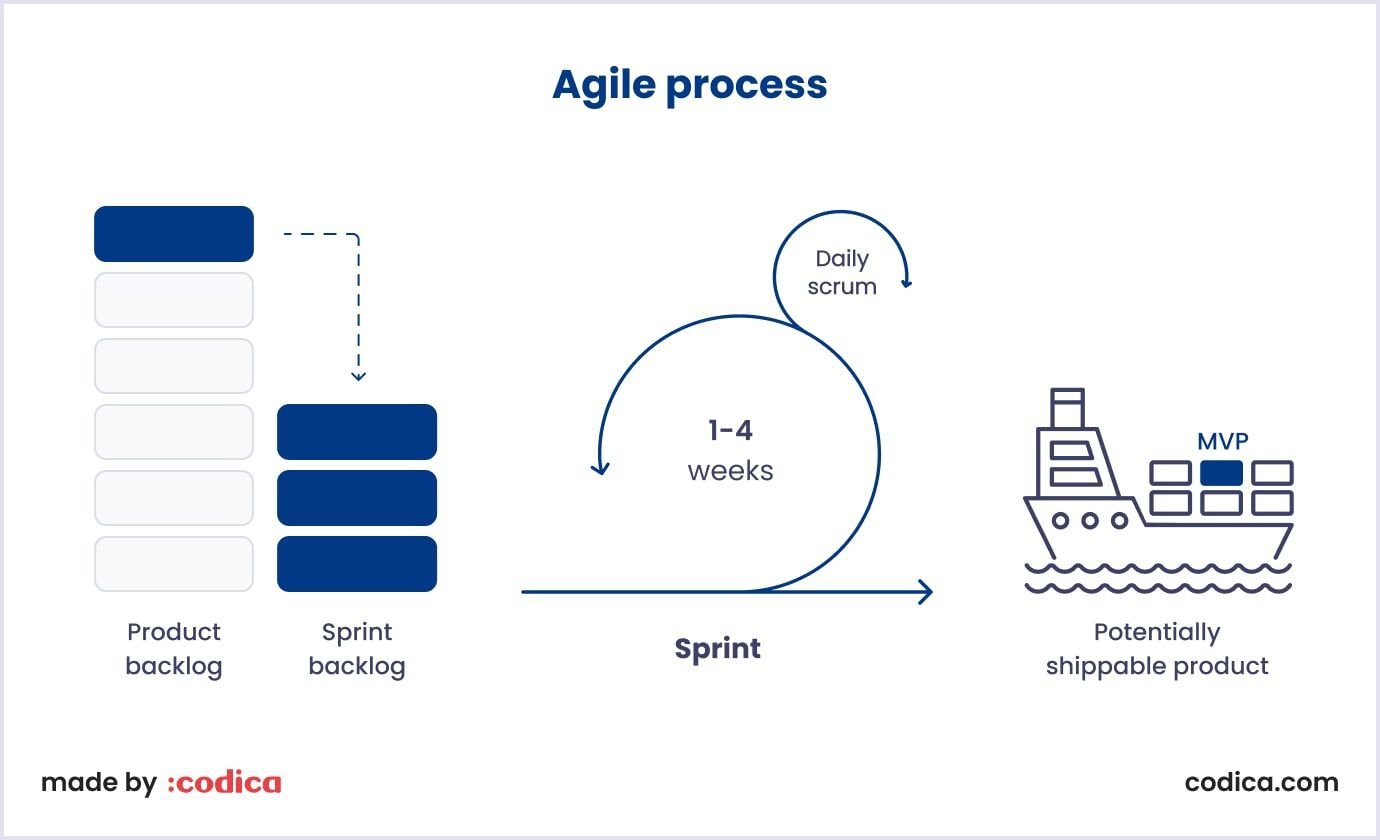
Refining your product to its essential elements will streamline the development process, avoiding unnecessary complexities that could change your timeline. This expedites your journey to market and ensures that each phase of development is a deliberate stride toward success.
In fact, MVP Agile has boosted success for 98% of companies. Below, you can see why companies prefer MVP Agile development.
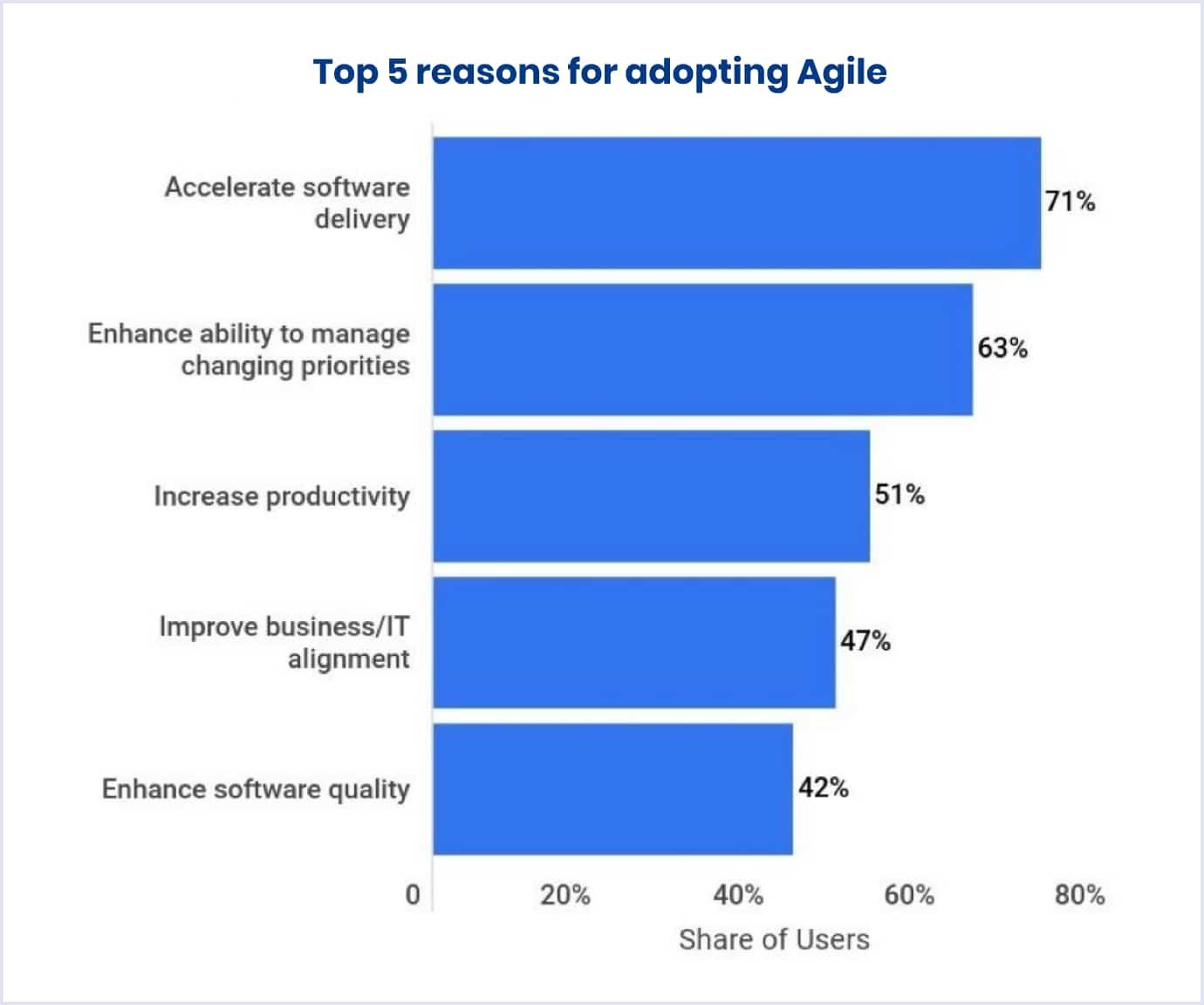
Source: Enterprise Apps Today
Optimal practices for the MVP Agile methodology
In general, MVP Agile methodology has revolutionized the software development landscape, offering a dynamic and customer-centric approach to project management. So, let’s delve into fundamental Agile best practices that form the foundation for successful project execution.
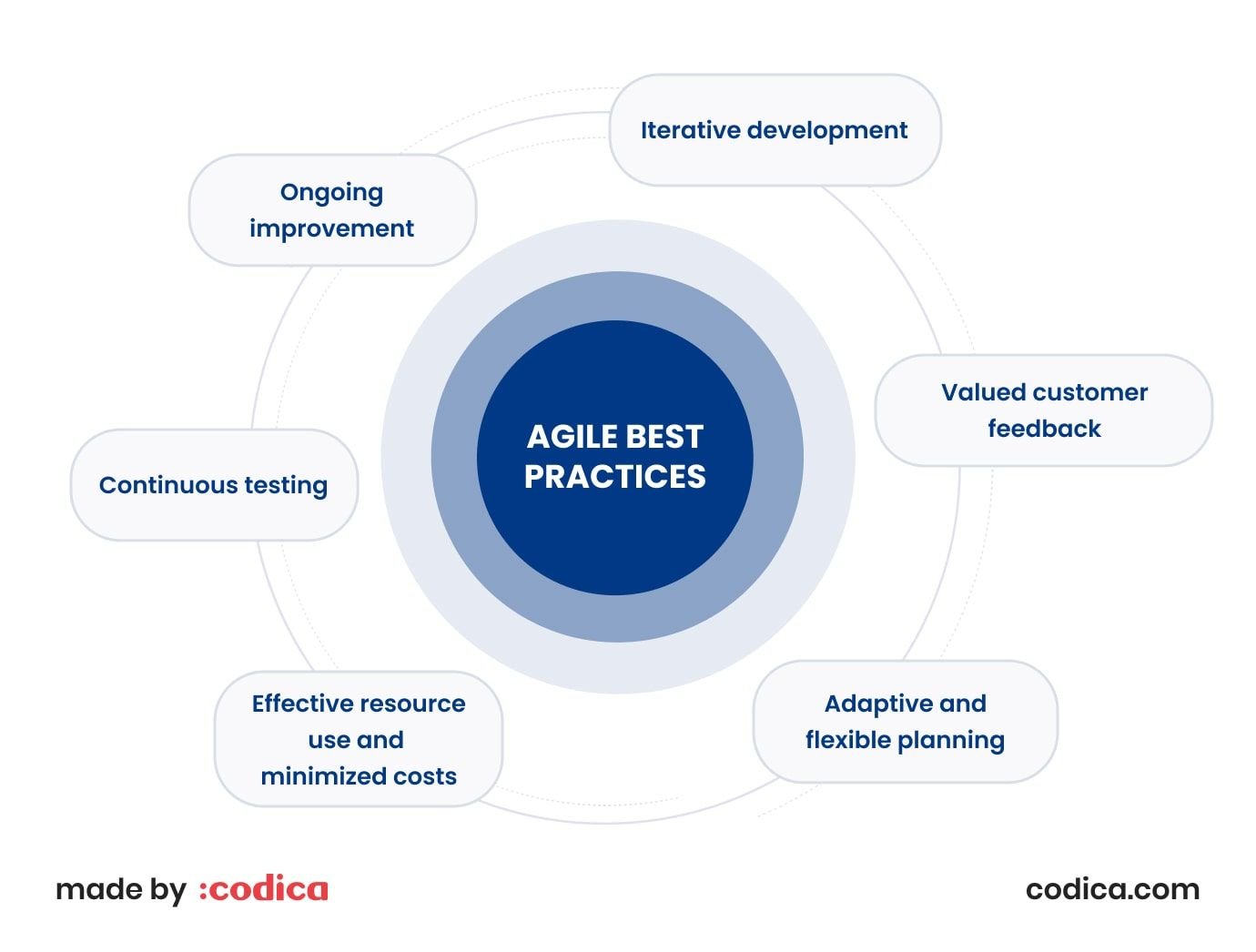
Iterative development
MVP Agile divides projects into small iterations for frequent releases and rapid feedback. This practice enhances adaptability to changing requirements and accelerates time-to-market.
Valued customer feedback
It prioritizes customer collaboration for fine-tuning products. This approach establishes a strong connection by involving customers early and consistently.
Adaptive and flexible planning
This practice embraces change and adjusts plans based on feedback and market dynamics. Also, it ensures project alignment with organizational goals through regular reassessment.
Effective resource use and minimized costs
It promotes efficient resource utilization and collaboration in cross-functional teams. In fact, this practice identifies and addresses issues early to prevent costly rework.
You may also like: 10 Main Benefits of Minimum Viable Product (MVP) Development for Startups in 2024
Continuous testing
This approach integrates automated testing for rigorous testing in each iteration. Moreover, it improves product reliability, reduces time-to-market, and boosts customer satisfaction.
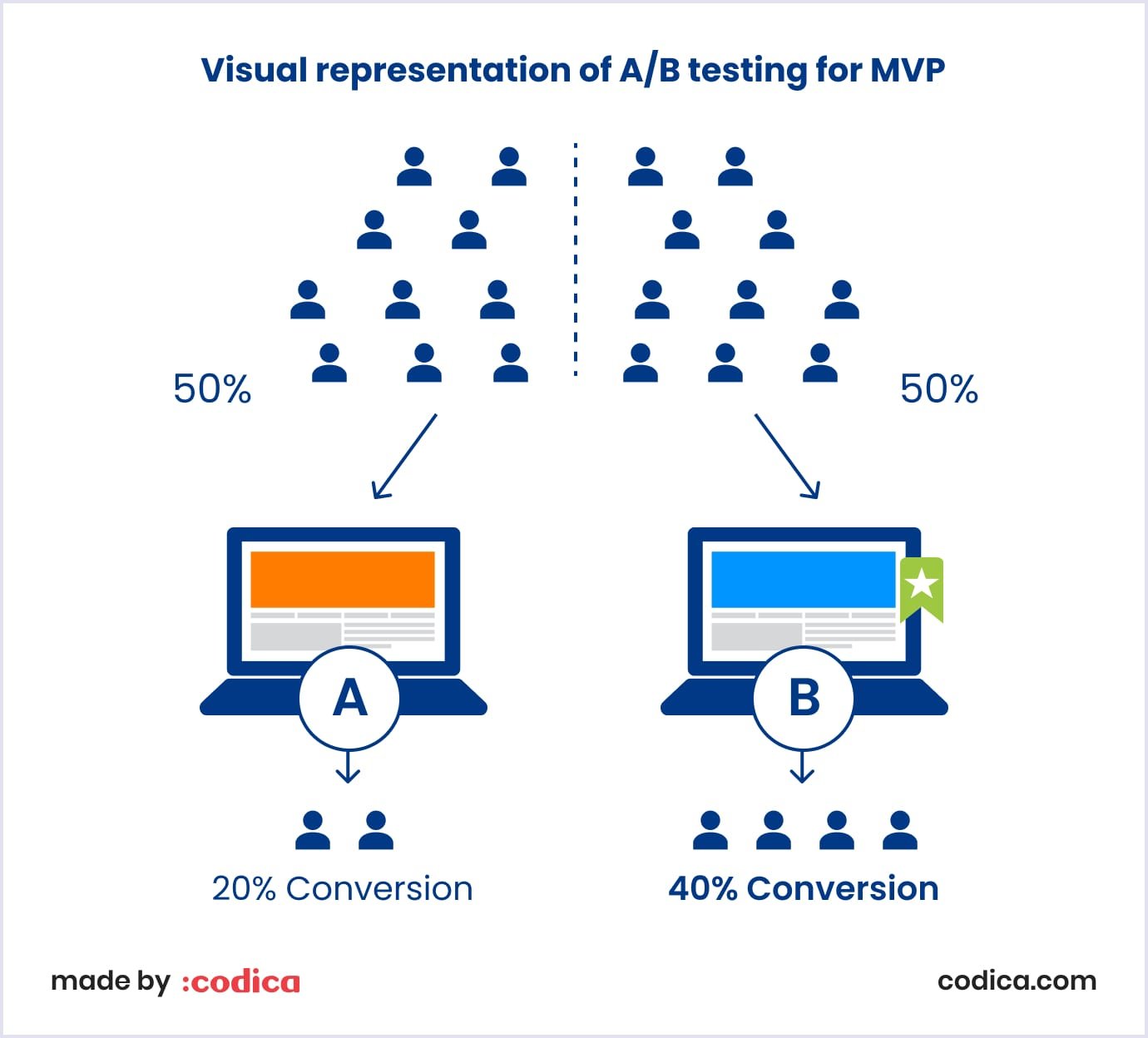
Ongoing improvement
It thrives on continuous learning and adaptation through regular retrospectives. On the other hand, this practice optimizes Agile implementation over time for sustained success.
To conclude, adopting MVP Agile best techniques empowers businesses to deliver value to customers more efficiently, respond effectively to change, and foster a culture of continuous improvement. Collectively, these practices contribute to the success of Agile projects and set the stage for innovation and adaptability in the dynamic world of custom software development.

Essential benefits of MVP Agile development
Agile development MVP is a strategy that brings several advantages. This methodology emphasizes the creation of a basic version of a product with essential features, allowing for rapid development and iteration.
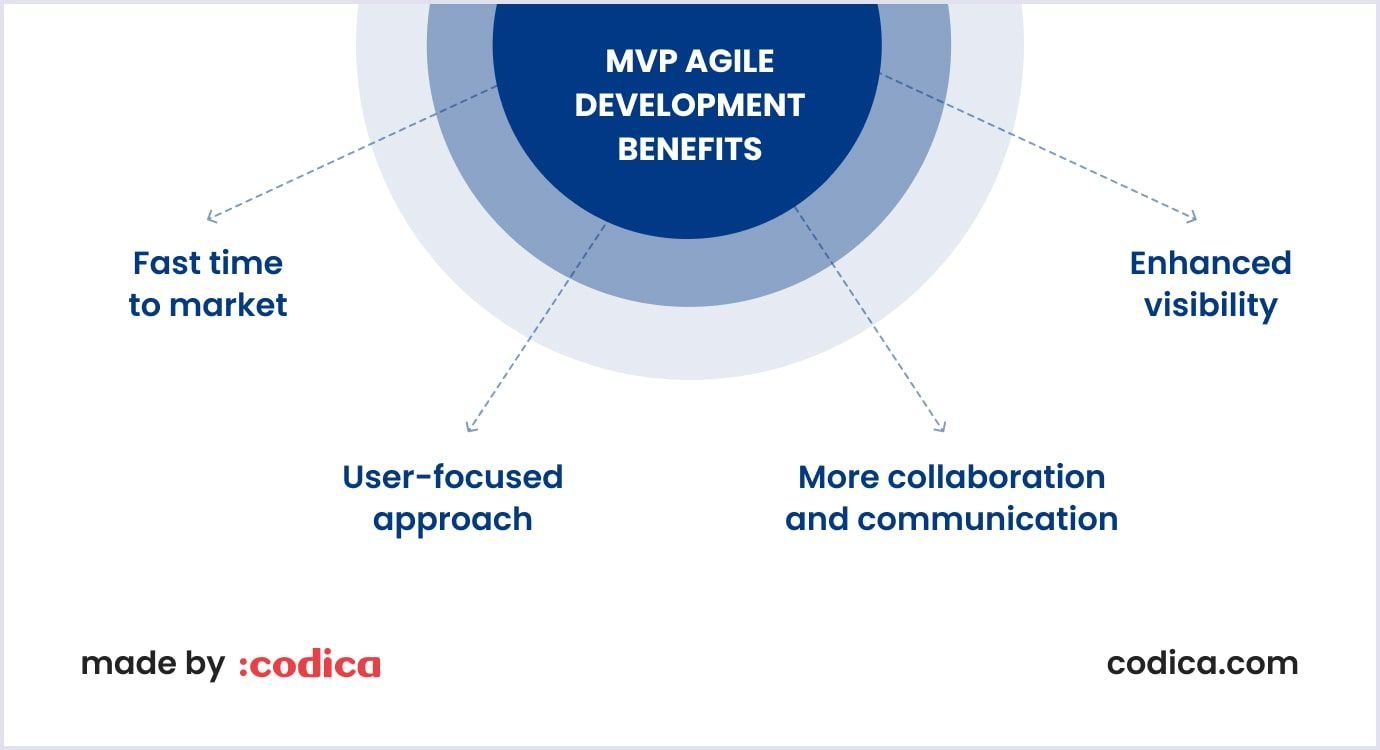
Fast time to market
Development teams can expedite the release process by focusing on delivering a minimum set of features that address core user needs. This rapid deployment enables companies to gain early market feedback and adjust and enhance the product based on real user experiences.
User-focused approach
Development specialists can collect valuable insights and feedback by delivering an MVP to the target audience. This user-centric approach ensures that subsequent iterations and feature enhancements are aligned with actual user requirements.
Improved collaboration and communication
The iterative nature of the process encourages regular feedback, discussions, and adjustments. This collaborative atmosphere not only enhances the quality of the product but also contributes to the professional growth of team members.
Enhanced visibility
The iterative cycles, known as sprints, offer regular checkpoints for assessment and evaluation. This transparency allows stakeholders to track the development process, understand the current state of the product, and make informed decisions. Better visibility into the project helps manage expectations, identify potential issues early on, and adjust strategies as needed.
To learn more about MVP’s benefits, watch the video below.
Read also: Why You Need MVP Startup Software Development: 5 Key Benefits in 2024
A step-by-step guide to delivering MVP model Agile
Creating an MVP requires more than just a concept - it demands a strategic and dynamic approach. So, let’s analyze the development process that aligns with the principles of Agile.
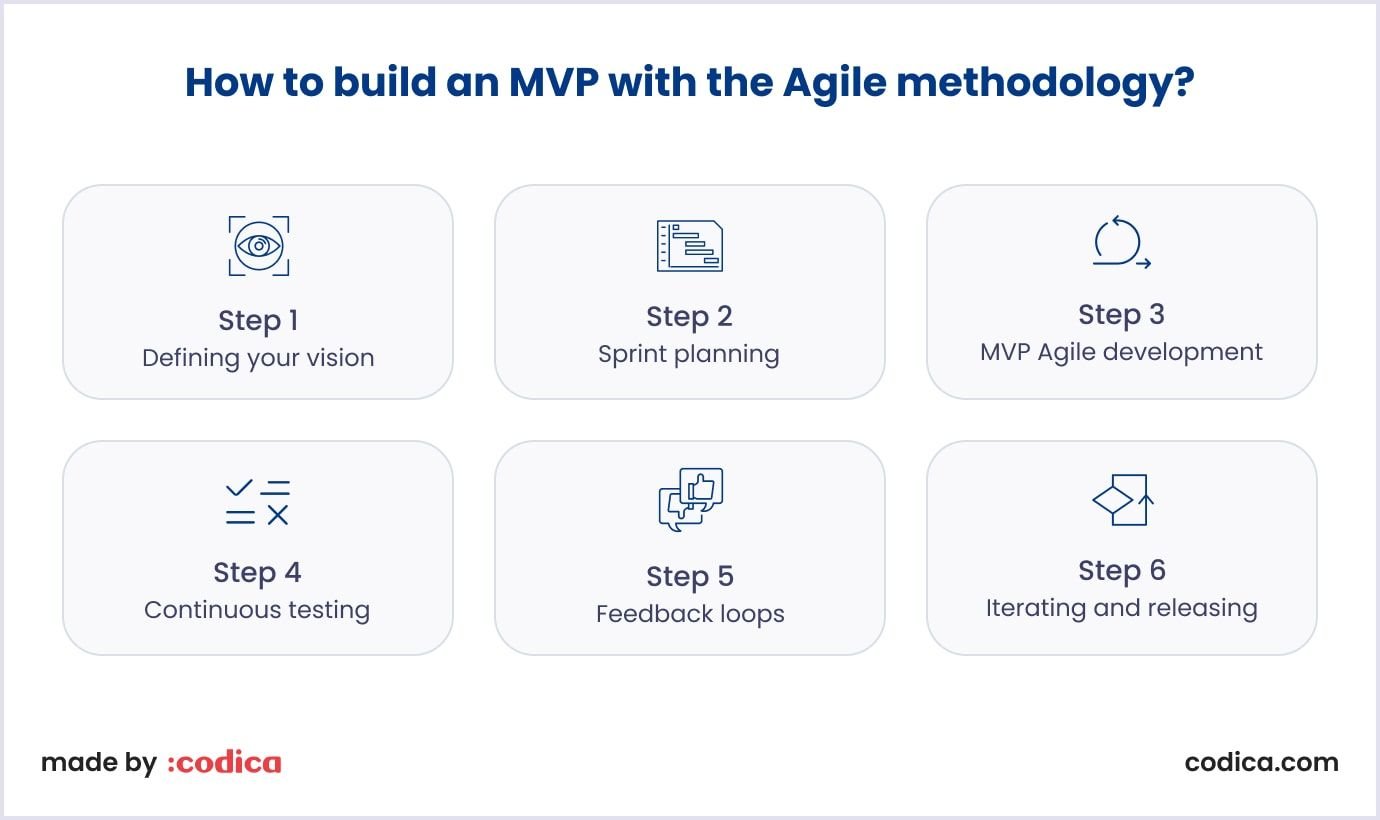
Step 1. Defining your vision
MVP Agile methodology begins with a clear vision. Understanding your target audience’s needs or pain points is crucial at this stage, as it sets the foundation for the entire development process.
Step 2. Sprint planning
Then, break down the development process into manageable fragments known as sprints. During sprint planning, prioritize the features and functionalities that align with the MVP’s core objectives. This step ensures a focused and organized approach to development.
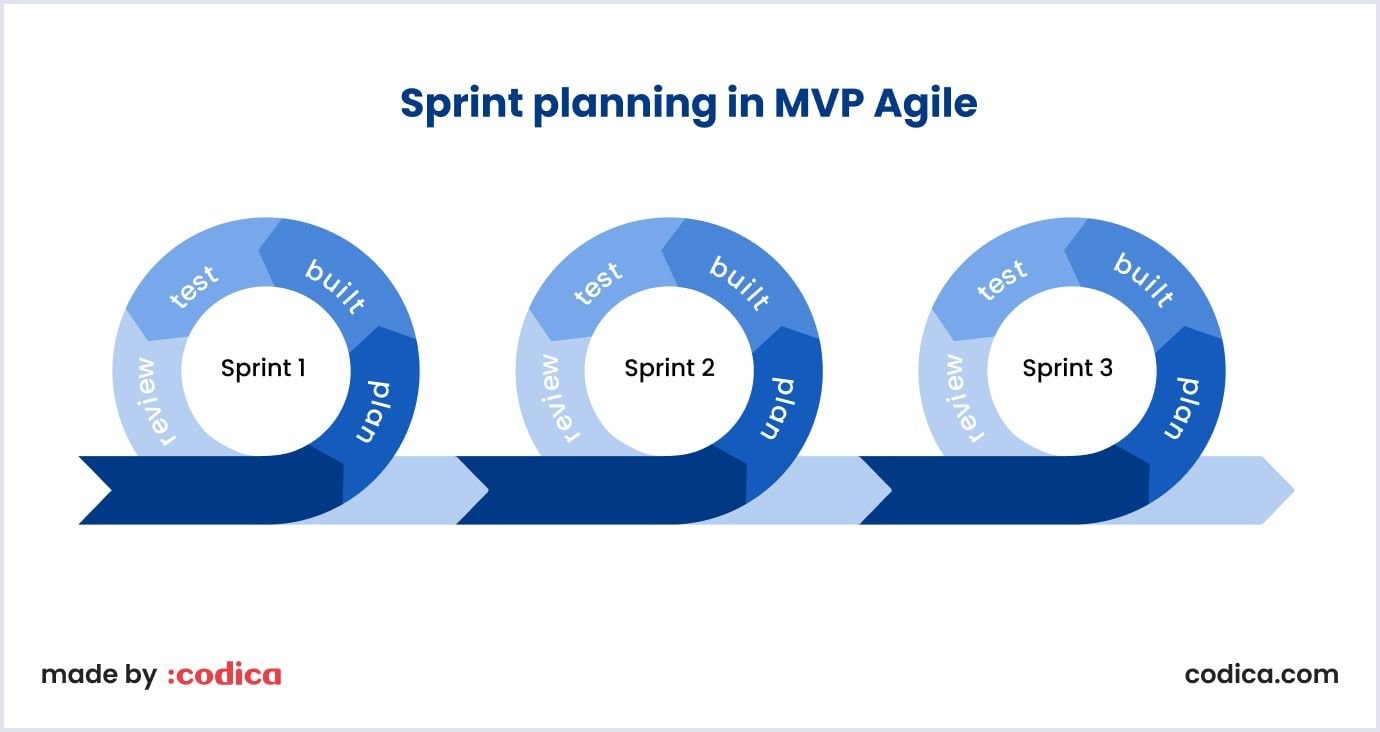
Step 3. MVP Agile development
The heart of the Agile approach lies in iterative development. Keep the development cycles short and deliver functional increments after each sprint. This approach ensures that the product evolves with user needs and market dynamics.
Step 4. Continuous testing
Regularly assess the functionality, performance, and user experience of your MVP. Automated testing tools can accelerate this process, providing quick feedback on potential issues. Determining and managing bugs early in the development cycle helps maintain product quality.
Read also: MVP Testing: Techniques, Strategies, and Plan
Step 5. Feedback loops
Create channels for constant communication and feedback. Engage with stakeholders, including potential users, to gather insights on the MVP’s performance and user satisfaction. This iterative feedback loop is vital for refining features, addressing pain points, and aligning the product with user expectations.
Step 6. Iterating and releasing
Prioritize enhancements, modifications, or additional features that align with user needs and market trends. Once iterations are complete, release updated versions regularly. This continuous release cycle keeps the product dynamic, responsive, and relevant.

Our expertise in minimum viable product Agile concepts
Codica’s experience in MVP Agile development is fostering collaboration and embracing change as a catalyst for innovation. With our reliable MVP development services, your minimum viable product journey becomes a collaborative experience where the destination is not just a product but a success story in the making.
Individuals and interactions matter as much as processes and tools
We prioritize the human element over rigid processes and tools. The collaborative spirit thrives within our teams, fostering an environment where we encourage bright ideas and innovation.
Functional software over extensive documentation
While documentation is essential, we believe in letting the software do the talking, placing tangible results above extensive paperwork. We understand that in the fast-paced world of MVP Agile development, a functional prototype speaks louder than a hefty manual.
Customer collaboration over contract negotiation
At Codica, we prioritize understanding our clients’ needs and developing partnerships beyond contract negotiations. This collaborative philosophy ensures that the end product meets and exceeds customer expectations.
Responding to change while following a plan
The Codica team thrives on responding to change rather than rigidly following a predefined plan. This agility allows us to guide uncertainties, shift when necessary, and continuously refine the MVP to align with evolving requirements.
Case study: PlanMyKids
In creating the activity booking marketplace, we embraced the Agile methodology, breaking down the project into smaller parts known as sprints. This strategy proves highly effective, ensuring a steady and predictable flow of new functionalities.
Within each sprint, progress is meticulously tracked during the sprint review on the project board. Any new changes are seamlessly incorporated into the staging instance.
This transparent approach allows customers to have real-time visibility into the progress of their projects at any given moment. As each sprint concludes, our team engages in a retrospective, identifying any potential issues on the project and promptly implementing measures to address them.
Conclusion
The MVP Agile methodology has emerged as a guiding light where adaptability and responsiveness are paramount. At the heart of Agile lies the minimum viable product, a strategic approach that has revolutionized how teams conceptualize, create, and deliver products. In this article, it becomes clear that the MVP is not just a development strategy; it’s a philosophy that reshapes our understanding of success and failure in the digital realm.
At Codica, we carve experiences, redefine possibilities, and bring your digital dreams to life. Join us in pursuing excellence, where every line of code is a step towards a brighter, technologically advanced future.
Ready to launch on a journey of innovation and iterative progress? Contact us today, visit our portfolio, and let’s create the future together.
